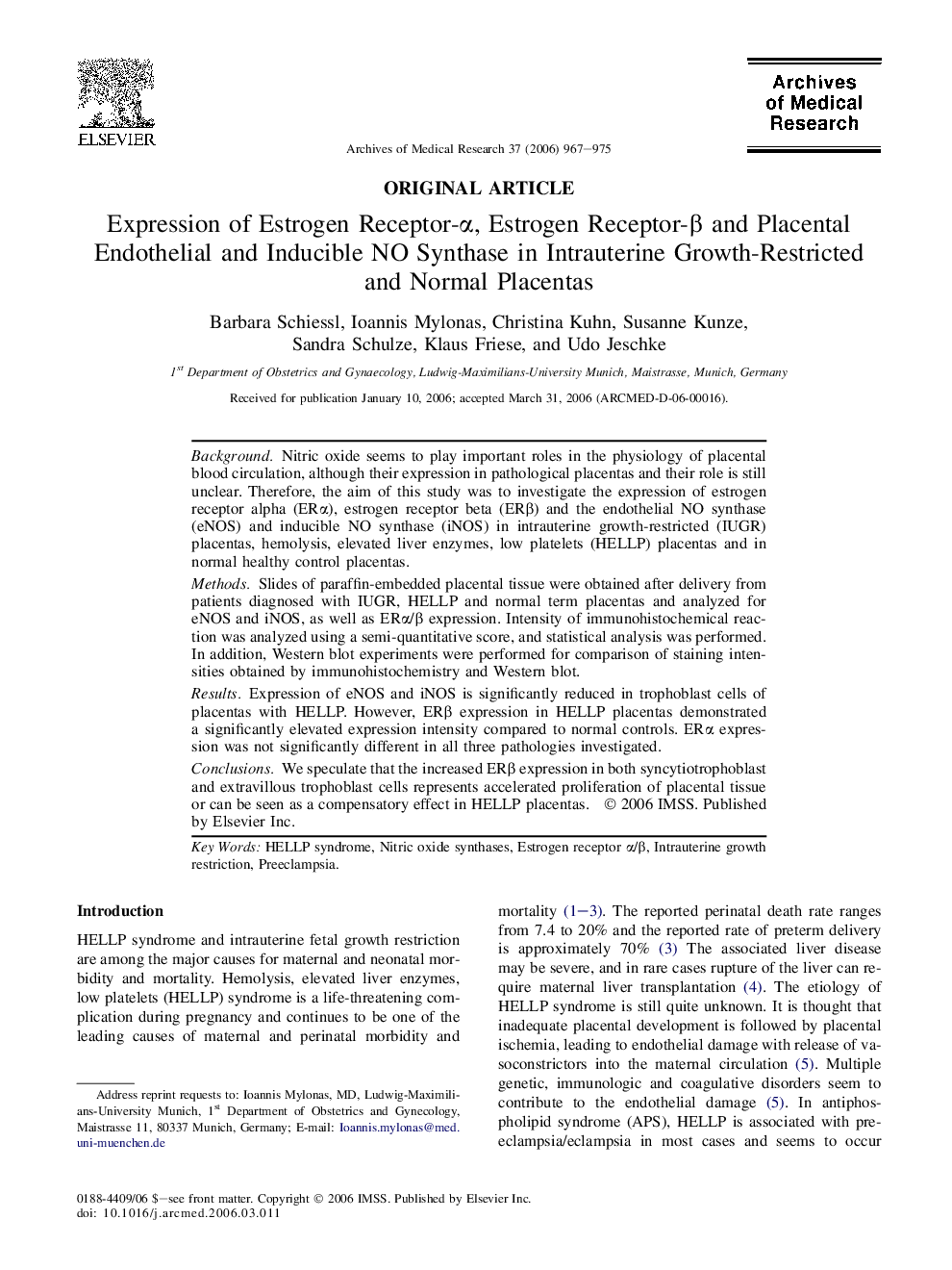| Article ID | Journal | Published Year | Pages | File Type |
|---|---|---|---|---|
| 3447602 | Archives of Medical Research | 2006 | 9 Pages |
BackgroundNitric oxide seems to play important roles in the physiology of placental blood circulation, although their expression in pathological placentas and their role is still unclear. Therefore, the aim of this study was to investigate the expression of estrogen receptor alpha (ERα), estrogen receptor beta (ERβ) and the endothelial NO synthase (eNOS) and inducible NO synthase (iNOS) in intrauterine growth-restricted (IUGR) placentas, hemolysis, elevated liver enzymes, low platelets (HELLP) placentas and in normal healthy control placentas.MethodsSlides of paraffin-embedded placental tissue were obtained after delivery from patients diagnosed with IUGR, HELLP and normal term placentas and analyzed for eNOS and iNOS, as well as ERα/β expression. Intensity of immunohistochemical reaction was analyzed using a semi-quantitative score, and statistical analysis was performed. In addition, Western blot experiments were performed for comparison of staining intensities obtained by immunohistochemistry and Western blot.ResultsExpression of eNOS and iNOS is significantly reduced in trophoblast cells of placentas with HELLP. However, ERβ expression in HELLP placentas demonstrated a significantly elevated expression intensity compared to normal controls. ERα expression was not significantly different in all three pathologies investigated.ConclusionsWe speculate that the increased ERβ expression in both syncytiotrophoblast and extravillous trophoblast cells represents accelerated proliferation of placental tissue or can be seen as a compensatory effect in HELLP placentas.
